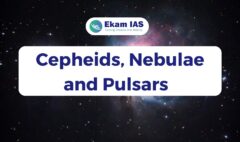Albatross
December 20, 2022 2023-01-05 16:35Albatross
NEWS: A Rare flight of Antarctic’s Light-mantled Albatross to T.N. intrigues researchers.
Rameswaram and adjoining islets of the Gulf of Mannar Marine National Park on the Adam’s Bridge (Ram Setu)- Asia’s first sighting of Light-mantled Albatross – species native to the Antarctic seas.
The location where the Albatross was spotted is part of the Palk Bay and near the Gulf of Mannar.
RESEARCHER’s VIEW
- Directs researchers to look for bird migration away from the well-known and established routes and sites.
- Change in atmospheric pressure could have been among the reasons for the Albatross to land on an Indian shore.
- Birds like albatross, that are known to be on the move, use the wind and save their energy during flights.
- Even slight changes in the temperature can cause drastic changes in the wind pattern and birds could land in faraway places that are not familiar to them.

Light-Mantled Albatross
IUCN status: Near Threatened
Scientific Name: Phoebetria palpebrate.
Also known as Grey-mantled albatross.

Features:
- Ash coloured with darker areas around the head and lighter areas across the back and wingtips.
- Distinctive white stripe immediately above the eye.With broad pelagic habits, maintains a circumpolar distribution in the Southern Ocean
- Breeds on : several sub-Antarctic islands- Macquarie Islands, Heard Island and McDonald Islands (Australia), South Georgia Island etc.
- Worldwide population – 21,600 breeding pairs, according to an estimate in 1998.
- Except when breeding, its habitat is entirely marine and it will forage from the edges of the Antarctic pack-ice to about 40°S.
Model Queston
Q. With reference to Light Mantled Albatross, a species which was discovered recently from India, consider the following statements:
- These species are native to Africa region.
- IUCN status accorded to this species is “Near Threatened”.
- These species are abundant in almost all Asian countries.
Which of the statements given above is/are correct?
(a) 1 only (b) 2 only (c) 1 and 3 only (d) 1, 2 and 3
Answer: B
To UPSC-standard MCQs, join our Telegram Channel.
To get years of subjectwise-segregated newspaper articles, join our subjectwise Telegram Channels.
Join our 140k+ YouTube community to watch free classes on various UPSC related topics.
Follow us on Instagram for UPSC updates.
Click here to read more UPSC Current Affairs.
Ekam IAS is the oldest online IAS institute in Kerala. We’ve years of experience in mentoring and teaching students all over the nation, helping them achieve their UPSC-dream through the right guidance, strategy, and precise content. Join Ekam IAS and turn your UPSC-dream into reality.
To learn customizable preparation strategies, book an appointment with our UPSC-expert. Book Now.







